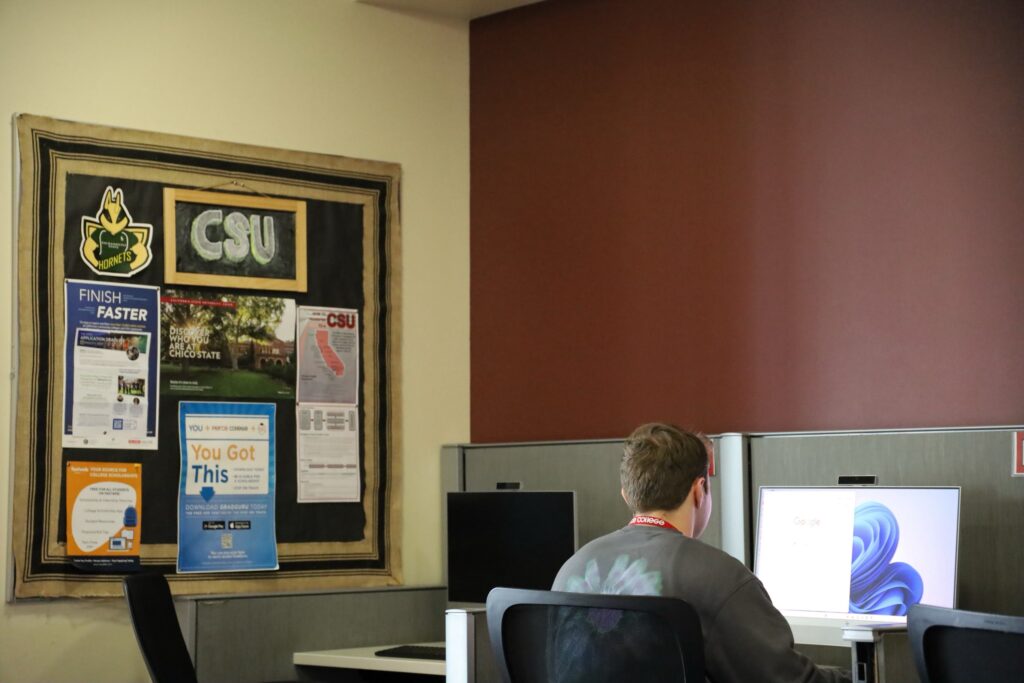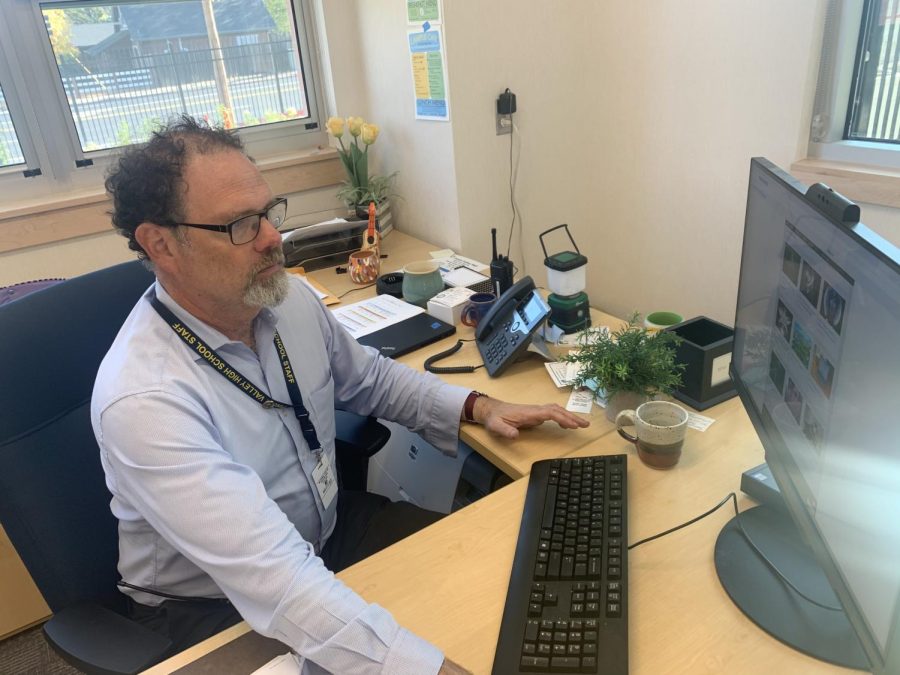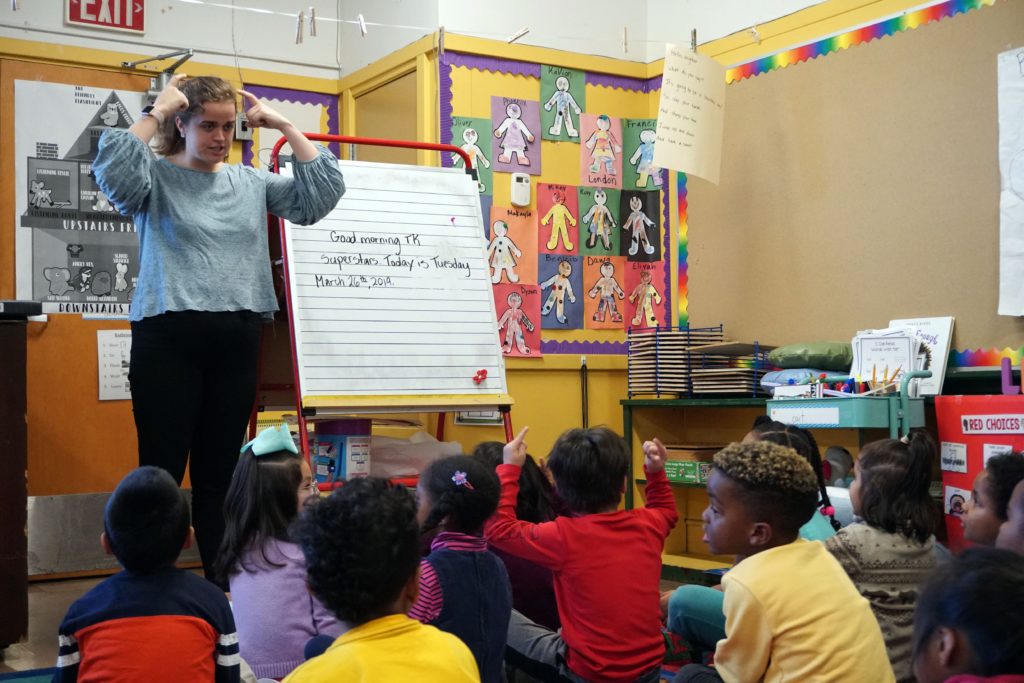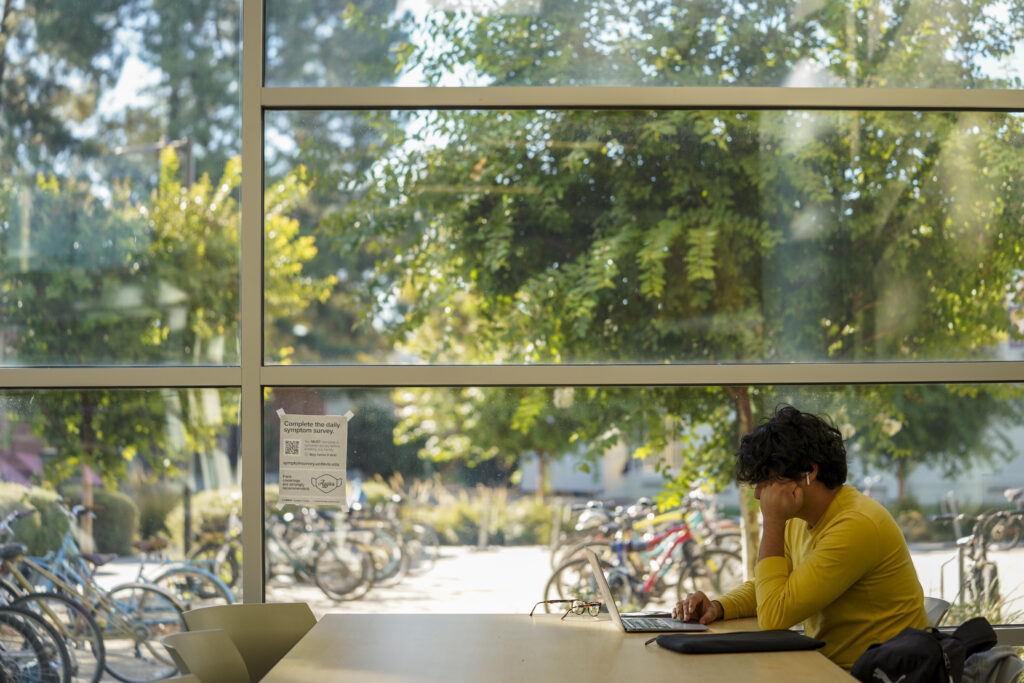
Chino Valley Unified school board President Sonja Shaw speaks at the parental rights rally in Simi Valley.
Credit: Courtesy of Rebecca Holz / California Policy Center
The Chino Valley Unified School District school board voted Thursday to adopt a revamped version of its transgender notification policy, which LGBTQ+ advocates fear would help the district withstand court battles and propel the case to the United States Supreme Court — a possibility previously expressed by Board President Sonja Shaw.
Unlike the original policy adopted in July, the new policy does not use words like “gender” or “bathroom.” Instead, it broadly states that school officials should notify parents in writing, within three days, if their child requests to change any information in their official or unofficial record. It also cites previous decisions in favor of parental rights.
“These policies are rooted in distrust for our schools. And so you know, they’re breaking down these relationships that are essential to schools being successful,” said Kristi Hirst, a district alumna, teacher and parent, who also serves as the the chief operating officer of Our Schools USA — a national organization focused on protecting public education.
“What is unclear is what ‘unofficial records’ are, and my hunch is, that’s where…. targeting of transgender students is going to really be seen,” Hirst said.
Thursday’s board meeting was packed with both supporters of the new policy, as well as members of the district’s teacher’s union, who wore matching red shirts in solidarity.
Supporters of the policy also spoke during public comment on Thursday with one of them claiming that the “initiative” would put an end to puberty blockers supposedly being administered and prevent “boys entering into women’s/girls’ spaces.”
One speaker told the board, “Safe teachers don’t lie to parents. Safe teachers don’t keep secrets from parents. Thank you for protecting our kids against unsafe teachers.”
“Parents love and know kids best. Calling a parent abusive for wanting to get their child the proper psychological help is completely ignorant.”
Both the previous and new versions of the policy stress the district’s commitment to foster trust between schools and parents. They also share the same three statements of intent: to maintain trust between schools and families, involve parents in decisions about their child’s mental health and increase communication and build positive relationships that can positively impact student outcomes.
The older version of the policy which passed in July would have required school staff to notify parents within three days in writing if their child asks to use a name or pronoun that is different from what is on their official student record. Parents would also have to be informed if their child wishes to access sex-segregated spaces that do not align with their biological sex or request to change anything on their official or unofficial record.
Under the new policy, however, parents would only be notified of the following:
- Requests to change official or unofficial records.
- Extracurricular or co curricular activities their student is involved in.
- Physical injuries at school or during school sponsored activities.
Both policies share the same guidelines in cases where a student experiences bullying, is involved in a physical altercation or has suicidal intentions.
“The updated policy strikes a balance between two important principles—prioritizing students’ well-being and upholding parents’ rights—and ensures that parents are kept informed every step of the way,” Shaw said in a Liberty Justice Center statement released Friday.
Chino community members have repeatedly claimed that such policies in Chino Valley Unified and beyond are detrimental to the mental and physical well-being of LGBTQ+ students.
A crisis hotline launched on Aug. 5 by Rainbow Youth Project USA and Our Schools USA has received nearly 650 calls since Chino Valley Unified passed its transgender notification policy, the Los Angeles Blade reported.
“All the students who have come to speak about this, they are hearing that rhetoric,” Hirst said, adding that the board’s decisions have fostered a climate of “mistreatment.”
“That is 100% going to filter down to schools, and it is. Your leaders, when they breathe that hate into the air, it spreads, and you can feel it.”
Hirst added that her daughter, who attends district schools, has also noticed an increase in physical fights and bullying against LGBTQ+ students.
Before the policy’s passage, “no one cared,” she said.
“There’s no teacher who has these nefarious intentions to kids and hides things from their parents. Nobody’s doing that. . . They [teachers] are constantly working to get parent volunteers and parent involvement.”
The lead up
In November 2022, voters elected a conservative majority to the Chino Valley Unified School District school board, with three members connected to Calvary Chapel Chino Hills, led by Pastor Jack Hibbs.
The board voted in June to ban pride flags and in November passed a policy to have a panel remove books it believes to be “sexually inappropriate.” In July, Chino Valley Unified became the first district to pass a policy that would require school officials to notify parents if their child shows any sign of being transgender, which has since spread to other districts, and originated from Assembly Bill 1314, proposed by Assemblymember Bill Essayli, R-Riverside, which was denied a hearing at the state level.
The district’s board meetings have also drawn the attention of conservative groups such as Leave Our Kids Alone, a group that travels to various school board meetings to advocate “age appropriate curriculum” and to oppose curriculum and practices they view as indoctrination.
State Superintendent Tony Thurmond attended the board’s July meeting to speak out against the transgender notification policy during public comment but was kicked out of the meeting.
In August, California Attorney General Rob Bonta launched a civil rights investigation and filed a lawsuit against the district. Two months later, a San Bernardino County judge blocked the district from enforcing the policy, arguing it “treats otherwise similar students differently based on their sex or gender identity.”
During the closed session of Thursday’s meeting, members of the board met with two law firms: The Liberty Justice Center and Atkinson, Andelson, Loya, Ruud, and Romo (AALRR) about the ongoing litigation.
Last September, the board hired The Liberty Justice Center — known for the landmark U.S. Supreme Court labor case Janus v. AFSCME — to provide them with pro-bono legal representation.
An argument for teacher support
For teachers in the Chino Valley Unified School district, discussions about the transgender notification policy are inseparable from a push for better wages.
If the board has hundreds of thousands to spend on legal fees, it has the money to bargain in good faith and provide a Cost of Living Adjustment, the teachers union has argued. And on Feb. 22, the union declared an impasse.
“We can’t hire teachers; we can’t attract them. We have all these openings. We have parents coming to our board meetings complaining about violence in our schools that’s not being addressed. We have parents coming in complaining about rampant racism in our schools that’s not being addressed, bullying that’s not being addressed,” Hirst said.
“And so we have real issues that need to be addressed, and instead, all of our resources and time and energy is going on these culture war issues that don’t improve our schools.”
In November, public records published by the Sacramento Bee and acquired by Our Schools USA found the district tripled their legal fees to AALRR since July, when they passed the first iteration of their transgender notification policy. In July, the Chino Valley Unified School District paid AALRR $30,903.
Those fees soared, amounting to $104,867 in August and $54,988 in September, in addition to the $307,000 spent during the 2022-23 academic year.
“We’d rather be home tonight grading papers, planning lessons, maybe trying to have some time with our families,” said Steven Frazer, the organizing committee chairperson for Associated Chino Teachers. “But it’s important that we’re here. It’s important that the board understands that we’re united in standing up for our rights, for student rights and just for what’s right.”
Two weeks ago, hundreds of district teachers rallied for the cause — and made their voices heard again before Thursday’s meeting.
“I know this community really well. I love this community. And I’m watching the most beloved teachers just really struggling and wanting to leave,” Hirst said.
“There’s nothing in my kids’ educational experience that is as impactful as the quality of the teachers they have access to. And I’m really concerned that we’re not going to attract the best anymore.”
This story has been updated to include a statement from Chino Valley Unified School Board President Sonja Shaw.



















